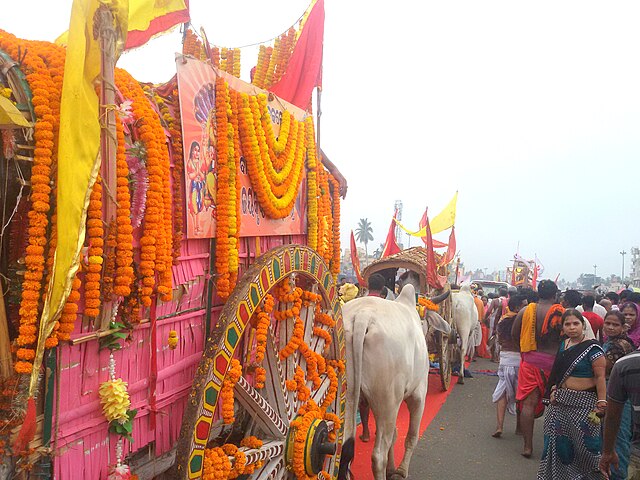The Jagannath Temple is an important Hindu temple dedicated to Jagannath, a form of Vishnu–one of the trinity of supreme divinity in Hinduism. It is located in Puri in the state of Odisha, situated on the eastern coast of India. As per temple records, King Indradyumna of Avanti built the main temple of Jagannath at Puri. The present temple was rebuilt from the tenth century onwards, on the site of the pre-existing temples in the compound, but not the main Jagannath temple, and begun by Anantavarman Chodaganga, the first king of the Eastern Ganga dynasty. Many of the temple rituals are based on Oddiyana Tantras which are the refined versions of Mahayana Tantras as well as Shabari Tantras which are evolved from Tantric Buddhism and tribal beliefs respectively. The local legends link the idols with aboriginal tribes and the daitapatis (servitors) claim to be descendants of the aboriginals. The temple is one of the 108 Abhimana Kshethram of the Vaishnavite tradition.
Jagannath Temple, Puri
Jagannath Puri
Rameswaram
Dwarka
Jagannatha is a deity worshipped in regional Hindu traditions in India as part of a triad along with his (Krishna's) brother Balabhadra, and sister, Subhadra. Jagannath, within Odia Hinduism, is the supreme god, Purushottama, and the Para Brahman. To most Vaishnava Hindus, particularly the Krishnaites, Jagannath is an abstract representation of Krishna, or Vishnu, sometimes as the avatar of Krishna or Vishnu. To some Shaiva and Shakta Hindus, he is a symmetry-filled tantric form of Bhairava, a fierce manifestation of Shiva associated with annihilation.
Jagannatha idol in 2011
Statue of Jagannatha at Bhubaneswar, 2015
Jagannath icons are produced from wood. They are replaced every 8 or 12 or 19 years. Above: logs in transport to prepare the Jagannath icon.
2007 Jagannath Chariot Festival in Puri, Odisha







